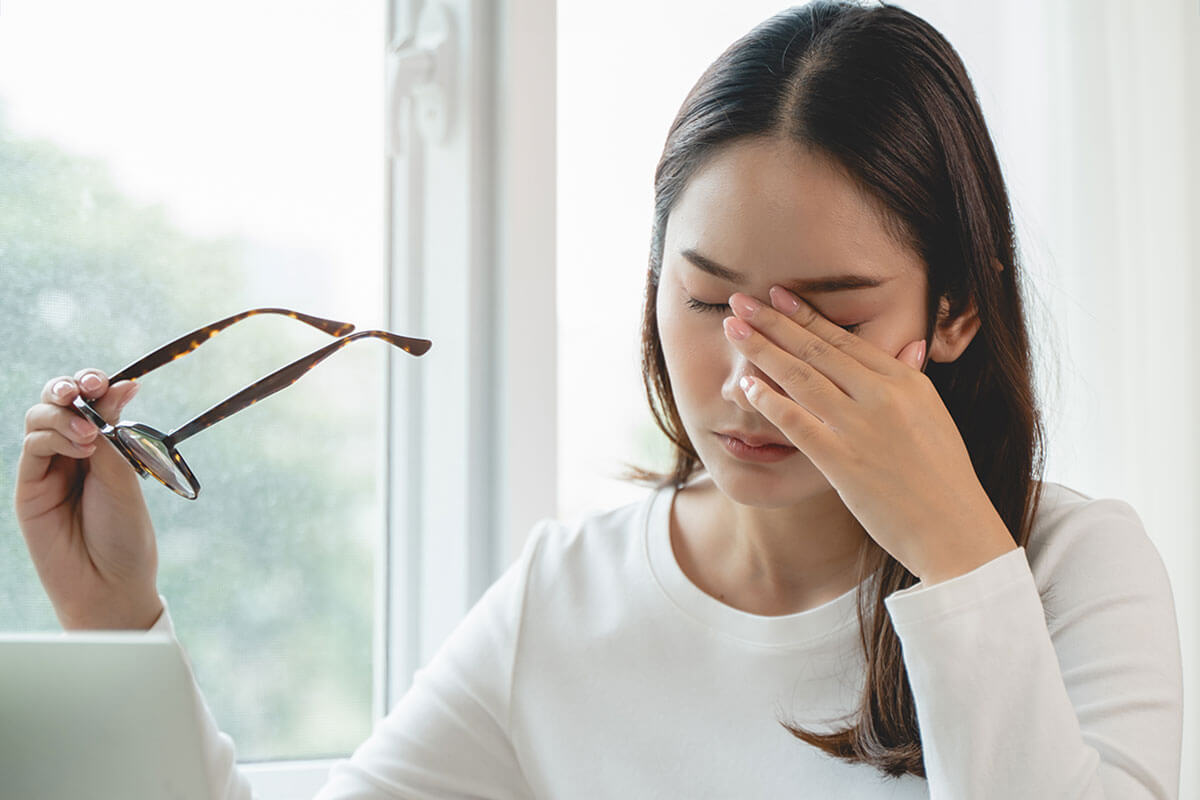
Understanding and Managing Dry Eye: What You Should Know
If your eyes often feel gritty, burn, or get blurry for no clear reason, you're not alone. Dry eye disease affects an estimated 35.5 million Americans, making it one of the most common eye conditions today.¹
What Is Dry Eye?
Dry eye occurs when the eyes don't produce enough tears, when tears evaporate too quickly, or when the quality of tears isn't adequate to keep the eye surface properly lubricated.²
Common symptoms include:
- A scratchy or gritty sensation
- Burning or stinging
- Redness
- Blurry vision
- Sensitivity to light²
Left untreated, dry eye can lead to complications like eye infections, damage to the surface of the eye, and a decrease in overall quality of life.⁴
“Many patients share that dry, irritated eyes make it difficult to focus at work, enjoy reading, or simply get through the day comfortably,” says Dr. Rebecca Passa, an optometrist with Doctor's Exchange of Arizona in Scottsdale. “They’re eager to know what can bring them lasting relief.”
What Causes Dry Eye?
Dry eye can affect anyone, but certain risk factors increase the likelihood of developing it:
- Age 50 or older - Tear production naturally decreases with age.³
- Gender - Hormonal changes during pregnancy or menopause can impact tear production.³
- Contact lens use²
- Vitamin A or omega-3 deficiency²
- Certain medical conditions such as diabetes, thyroid disorders, lupus, or Sjögren's syndrome² ³
- Side effects of medications including those for allergies, depression, high blood pressure, or after laser eye surgery³
Everyday Triggers to Watch Out For
In addition to medical causes, many lifestyle and environmental factors can make dry eye symptoms worse:³
- Exposure to wind, air conditioning, or heating
- Dry environments such as airplanes, high altitudes, or indoor spaces during winter
- Smoking or secondhand smoke exposure
- Prolonged screen time with reduced blinking
Simple changes—like using a humidifier, wearing wraparound sunglasses outdoors, and remembering to blink during screen use—can make a big difference. Staying hydrated (aim for 8–10 glasses of water daily) and getting 7–8 hours of sleep each night also help.²
What Can You Do About It?
Treatment depends on the root cause and severity of symptoms. For many, over-the-counter lubricating eye drops (artificial tears), gels, or ointments can offer fast relief.²
If symptoms persist despite trying drops, it's important to consult an eye care professional.
“One of the most effective first steps I recommend for patients with dry eye is switching to a high-quality, preservative-free artificial tear like REFRESH® RELIEVA® PF,” shares Dr. Passa. “It makes a noticeable difference—especially for those with sensitive eyes or who wear contact lenses.”
Relief You Can Trust: Spotlight on REFRESH®
The REFRESH® family of products includes a variety of artificial tears, gels, and ointments designed for use throughout the day or night to manage dry eye symptoms. It is the #1 doctor-recommended brand⁵ and includes the #1 selling preservative-free artificial tear⁶.
These products are formulated to temporarily relieve symptoms of eye dryness and irritation but are not a cure for dry eye disease.
About REFRESH® RELIEVA® and REFRESH® RELIEVA® PF
REFRESH® RELIEVA® and its preservative-free version, REFRESH® RELIEVA® PF, are designed to relieve dryness while helping to prevent further irritation. Both feature HydroCell® technology, which supports hydration and helps maintain healthy eye surface cells.
REFRESH® RELIEVA® products are available in a range of formats:
- Multidose and unit-dose preservative-free bottles
- Formulas for sensitive eyes
- Options safe for contact lens wearers
- Suitable for use after eye surgeries like LASIK (with doctor supervision)
“So many patients have told me they thought they just had to live with irritated, tired eyes because we live in the desert,” says Dr. Passa. “But once we create a tailored dry eye plan—often starting with the right lubricating drop—it makes a world of difference.”
Final Thoughts
Dry eye can be disruptive—but with the right care, it's manageable. Understanding your risk factors, identifying triggers, and using effective products can go a long way in restoring comfort and clarity.
If you're experiencing symptoms, speak to your eye doctor about the best options for relief.
References:
- Data on file; US-MULT-240462 2024 Update: Dry Eye Disease State Summary PPT deck; AbbVie; 05/22/2024
- Staff. “Dry Eye.” National Eye Institute, 15 Nov. 2023, https://www.nei.nih.gov/learn-about-eye-health/eye-conditions-and-diseases/dry-eye
- Staff. “Causes of Dry Eye.” National Eye Institute, 23 Dec. 2023, https://www.nei.nih.gov/learn-about-eye-health/eye-conditions-and-diseases/dry-eye/causes-dry-eye
- Staff. “Dry Eyes.” Mayo Clinic, 23 Sept. 2022, www.mayoclinic.org/diseases-conditions/dry-eyes/symptoms-causes/syc-20371863
- Nick Manning; 2023 Refresh ECP Recommendation Survey; Abbvie; 25/07/2023; N/A
- Abbvie; IRI Unify Preservative Free - Brand Level Geography: Total US - Multi Outlet Time: Latest 52 Weeks; Abbvie; 05/09/2021; N/A

